Wood preservation techniques play a crucial role in ensuring the longevity and durability of wooden structures. From ancient civilizations to modern wood engineering, humans have sought innovative ways to protect timber from decay, pests, and weathering. For instance, imagine a historical building constructed centuries ago with intricately carved wooden facades that have stood the test of time due to effective preservation methods. This article aims to provide a comprehensive guide on wood preservation techniques employed in wood engineering, exploring both traditional and contemporary approaches.
Throughout history, various civilizations have developed unique strategies for preserving wood. In ancient Egypt, for example, pharaohs ordered the construction of massive tombs made entirely out of cedarwood – a species known for its natural resistance against rotting agents such as fungi and insects. Furthermore, indigenous tribes in North America used smoke treatment to enhance the durability of their wooden tools and shelters by inhibiting fungal growth. These age-old techniques laid the foundation for advancements in wood engineering today. With increasing demands for sustainable materials and eco-friendly practices, researchers are continuously developing new methods to preserve timber while minimizing environmental impact.
In this article, we will delve into an array of wood preservation techniques ranging from chemical treatments like pressure impregnation with preservatives or fire-retardants to physical modifications such such as heat treatment and wood modification. Chemical treatments involve the use of preservatives that are applied to the wood to protect it from decay, insects, and fungi. Pressure impregnation is a common method where the preservative is forced deep into the wood under high pressure. This ensures that all parts of the wood are treated and protected.
Fire-retardant treatments are also used to make wood more resistant to fire. These treatments involve applying chemicals that inhibit combustion or slow down the spread of flames on the surface of the wood.
Physical modifications include techniques like heat treatment, which involves subjecting the wood to high temperatures in controlled conditions. This process alters the chemical composition of the wood, making it more resistant to decay and pests.
Wood modification techniques aim to enhance certain properties of wood by altering its structure. For example, acetylation involves treating wood with acetic anhydride, which changes its cell structure and makes it more resistant to moisture absorption and decay.
In addition to these traditional methods, researchers are exploring new technologies such as nanotechnology for wood preservation. Nanoparticles can be incorporated into coatings or preservatives to enhance their effectiveness against decay-causing organisms.
It’s important to note that choosing the right preservation technique depends on various factors such as the intended use of the wood, environmental conditions, and desired longevity. Understanding these techniques can help architects, engineers, and homeowners make informed decisions when it comes to preserving wooden structures.
In conclusion, wood preservation techniques have come a long way from ancient practices to modern innovations. By employing a combination of chemical treatments, physical modifications, and new technologies, we can ensure that wooden structures maintain their beauty and integrity for generations to come while minimizing environmental impact.
Understanding the Science of Wood Decay
Wood decay is a prevalent issue that affects various wood-based structures, leading to significant economic and environmental consequences. To illustrate its impact, let us consider an example: Imagine a wooden bridge in a picturesque town slowly deteriorating due to fungal decay. This case study highlights the urgent need for understanding the science behind wood decay and implementing effective preservation techniques.
To grasp the complex process of wood decay, it is crucial to explore key factors contributing to its occurrence. First and foremost, moisture plays a critical role as it provides an environment suitable for microbial growth. Additionally, different types of fungi possess unique capabilities to break down cellulosic materials present in wood fibers. Furthermore, insects such as termites can exacerbate this degradation process by burrowing into vulnerable areas of the wooden structure.
The detrimental effects of wood decay go beyond mere structural damage; they have far-reaching implications on both human well-being and ecological balance. Consider these emotional responses:
- A sense of loss: Witnessing historical wooden buildings succumb to rot invokes a feeling that our cultural heritage is being eroded.
- Concern for safety: Recognizing that weakened wooden structures pose risks to public safety raises apprehension among community members.
- Environmental distress: Reflecting on the destruction caused by wood decay emphasizes our responsibility towards sustainable resource management.
- Economic burden: Realizing the financial toll incurred through repairs or replacements underscores the importance of proactive preservation strategies.
In order to combat wood decay effectively, it is essential to comprehend its underlying mechanisms and implement appropriate preventive measures. The following table summarizes common causes and impacts associated with different types of wood deterioration:
| Type of Deterioration | Causes | Impacts |
|---|---|---|
| Fungal Decay | Moisture, favorable temperature | Structural weakening, aesthetic degradation |
| Insect Infestation | Vulnerable areas in wooden structures | Loss in integrity, compromised safety measures |
| Physical Damage | Impact or abrasion | Reduced load-bearing capacity, increased decay |
By understanding the science behind wood decay and acknowledging its far-reaching consequences, we can appreciate the urgency of implementing effective preservation methods. In the subsequent section about “Common Wood Preservation Methods,” we will explore various techniques aimed at mitigating or preventing wood deterioration.
Common Wood Preservation Methods
Wood preservation is a crucial aspect of wood engineering, as it ensures the durability and longevity of wooden structures. In this section, we will explore common wood preservation methods employed in the field, aiming to provide a comprehensive understanding of their effectiveness and applicability.
Before delving into specific techniques, let us consider an example that highlights the importance of wood preservation. Imagine a small wooden bridge located in a humid coastal region. Over time, due to exposure to moisture and microorganisms present in the environment, decay starts to set in. This not only weakens the structural integrity but also compromises its overall safety for users. To prevent such scenarios, various preservation methods are adopted.
One effective approach involves physical barriers or coatings that shield wood from external factors responsible for degradation. These include paint systems, varnishes, or water repellent treatments which create an impermeable layer on the surface of timber. By preventing moisture infiltration and inhibiting fungal growth, these protective measures significantly enhance wood’s resistance against decay.
Additionally, chemical treatments play a vital role in preserving wood by combating various deteriorating agents. Some commonly used chemicals include:
- Borates: These compounds act as fungicides and insecticides when applied to timber surfaces.
- Copper-based preservatives: They possess excellent antifungal properties and can be pressure-treated into lumber.
- Creosote: A traditional method involving coal tar distillate application that provides long-term protection against fungi and insects.
- Fire retardants: These additives reduce flammability while improving fire resistance properties.
To better understand these techniques’ comparative merits and limitations, refer to the following table:
| Preservation Method | Advantages | Limitations |
|---|---|---|
| Physical Barriers | Easy application | Limited efficacy over time |
| Chemical Treatments | Long-lasting protection | Environmental considerations |
| Pressure Treatment | Deep penetration into wood | Requires specialized equipment |
| Heat Treatment | Improved dimensional stability | Lower resistance to moisture |
As we have explored the diverse range of wood preservation methods, it becomes evident that each technique possesses unique advantages and limitations. Such considerations make it crucial for engineers and architects to select the appropriate method based on factors like environmental conditions, desired durability, and regulatory requirements.
In the subsequent section, we will delve deeper into chemical treatments for wood preservation. Understanding these processes is essential in comprehending how specific chemicals interact with wood fibers to enhance their strength and longevity.
Now moving forward to “Chemical Treatments for Wood Preservation,” let us explore various techniques used in this area of study.
Chemical Treatments for Wood Preservation
Wood preservation is a critical aspect of wood engineering, ensuring the durability and longevity of wooden structures. In this section, we will explore various chemical treatments for wood preservation.
Chemical treatments have been widely used in wood preservation due to their effectiveness in protecting against decay, insect infestation, and other forms of deterioration. One example that highlights the significance of such treatments is the case study of a historic timber-framed building located in a humid coastal region. The structure had suffered from extensive rot and pest damage over the years until it underwent a comprehensive chemical treatment process. This treatment not only halted further degradation but also restored its structural integrity, allowing the building to withstand harsh environmental conditions.
To better understand the range of chemical treatments available for wood preservation, let us delve into four key methods commonly employed:
- Pressure Treatment: Wood is placed inside an airtight chamber where chemicals are forced deep into its cellular structure under high pressure.
- Dip-Diffusion Method: Wood pieces are immersed in a preservative solution, allowing the liquid to penetrate through capillary action.
- Brush-On Treatments: Preservatives are manually applied onto the surface of wood using brushes or sprayers.
- Vacuum Impregnation: Similar to pressure treatment, vacuum impregnation involves subjecting wood to negative pressure before injecting preservatives.
The table below outlines these methods’ pros and cons as well as their specific applications:
| Method | Pros | Cons | Applications |
|---|---|---|---|
| Pressure Treatment | Deep penetration | Requires specialized equipment | Utility poles, marine pilings |
| Dip-Diffusion | Simple and cost-effective | Limited depth of penetration | Fence posts, garden furniture |
| Brush-On | Easy application | Superficial protection | Exterior siding, window frames |
| Vacuum Impregnation | Uniform distribution | Longer processing time | Wooden beams, railway sleepers |
Chemical treatments for wood preservation offer a range of options suited to different requirements and circumstances. By understanding these methods’ strengths and limitations, engineers and architects can make informed decisions when selecting the most appropriate treatment for their specific projects.
Transitioning into the subsequent section about “Physical Techniques for Wood Protection,” it is essential to explore other avenues in wood engineering that complement chemical treatments. These physical techniques provide an additional layer of protection against environmental factors and further enhance the durability of wooden structures.
Physical Techniques for Wood Protection
After exploring the various chemical treatments for wood preservation, we now shift our focus to physical techniques that play a crucial role in ensuring the longevity and durability of wood. To illustrate the effectiveness of these methods, let us consider a hypothetical scenario where an ancient wooden structure is at risk due to exposure to harsh weather conditions.
Case Study: The Preservation of a Historic Wooden Bridge
Imagine an iconic wooden bridge that has withstood the test of time but is gradually deteriorating under constant exposure to moisture and pests. In this case, physical techniques can be employed to protect and enhance its structural integrity.
Physical techniques offer several advantages over chemical treatments:
- Non-toxicity: Unlike some chemical preservatives, physical methods are environmentally friendly and do not pose any health risks.
- Cost-effectiveness: These techniques often require minimal investment compared to chemical alternatives.
- Ease of application: Implementing physical procedures does not demand intricate knowledge or specialized equipment.
- Compatibility with other preservation methods: Physical techniques can complement existing treatment strategies without interfering with their efficacy.
To effectively apply these principles on protecting wooden structures like bridges mentioned above or even furniture items, certain measures should be taken. Below is a table outlining four key physical techniques along with their respective benefits:
| Technique | Benefits |
|---|---|
| Heat treatment | – Increased dimensional stability- Enhanced resistance to decay |
| Pressure impregnation | – Deep penetration of preservative substances – Improved long-term protection |
| Surface coating | – Barrier against moisture intrusion – Prevention of fungal growth |
| Mechanical reinforcement | – Strengthening weakened areas – Enhanced load-bearing capacity |
Incorporating these approaches into the maintenance plan for the historic wooden bridge ensures its continued existence as a testament to architectural ingenuity. By employing physical techniques, we can safeguard not only our wooden heritage but also modern wood-based structures.
Transitioning into the subsequent section on “Natural Approaches to Wood Preservation,” it becomes evident that exploring alternative methods further enhances our understanding of preserving wood without relying solely on chemical or physical treatments. By examining natural approaches, we gain a holistic perspective on sustainable practices for wood engineering and preservation.
Natural Approaches to Wood Preservation
By exploring these methods, we can gain a deeper understanding of how to effectively protect and extend the lifespan of wooden structures.
One example of a natural approach is the use of essential oils derived from plant sources. These oils have shown promising results in inhibiting fungal growth and deterring insect infestations. For instance, research conducted by Johnson et al. (2018) demonstrated that cedarwood oil exhibited strong antifungal properties when applied to various types of wood. This case study highlights the potential effectiveness of utilizing natural compounds as an alternative treatment option.
- Ecologically friendly: Natural methods minimize environmental impact compared to chemical treatments.
- Sustainable: Utilizing renewable resources ensures long-term availability without depleting non-renewable reserves.
- Health-conscious: Natural preservatives reduce exposure to potentially harmful chemicals for both workers and occupants.
- Aesthetic appeal: Preserving wood using natural techniques often creates a visually pleasing finish.
This table provides additional insights on commonly used natural substances for wood preservation:
| Substance | Properties | Applications |
|---|---|---|
| Vinegar | Fungicidal | Outdoor furniture |
| Beeswax | Water repellent | Wooden sculptures |
| Linseed Oil | Moisture resistant | Flooring |
| Borates | Insect deterrent | Log homes |
Incorporating such materials not only enhances durability but also adds character and charm to wooden structures.
In preparation for best practices regarding long-term wood maintenance, it is imperative to acknowledge the significance of adopting these eco-friendly and sustainable strategies. The utilization of natural approaches promotes environmental stewardship while still ensuring structural integrity. By integrating these preservation techniques, we can create a harmonious balance between safeguarding wood and preserving its innate beauty.
Looking beyond natural approaches, the subsequent section will delve into best practices for long-term wood maintenance.
Best Practices for Long-Term Wood Maintenance
In the previous section, we explored various natural approaches that can be used for wood preservation. Now, let us delve into best practices for long-term wood maintenance, which are essential to ensure the durability and longevity of wooden structures.
To illustrate the importance of these practices, consider a hypothetical scenario where a wooden bridge is exposed to harsh environmental conditions without proper maintenance. Over time, moisture seeps into the wood fibers, leading to swelling and subsequent shrinkage as it dries out. This continuous cycle weakens the structural integrity of the bridge and increases its susceptibility to rot and decay.
To prevent such scenarios from occurring, here are some key considerations for effective long-term wood maintenance:
- Regular inspections: Conducting routine inspections allows for early detection of any signs of damage or deterioration in the wooden structure. Prompt identification enables timely repairs, preventing further degradation.
- Moisture control: Managing moisture levels is crucial in preserving wood. Implementing measures like waterproof coatings or ensuring adequate drainage systems can significantly reduce moisture-related issues such as warping or fungal growth.
- Proper ventilation: Providing sufficient airflow around wooden structures aids in drying out excess moisture and inhibits rot development. Adequate ventilation also helps regulate temperature fluctuations that could potentially harm the wood.
- Protective treatments: Applying protective finishes like paint, varnish, or sealants acts as a barrier against external elements while enhancing aesthetics.
| Maintenance Practice | Benefits |
|---|---|
| Regular inspections | Early detection of damage |
| Moisture control | Prevention of warping and decay |
| Proper ventilation | Reduced risk of mold/fungal growth |
| Protective treatments | Enhanced protection and aesthetics |
Implementing these best practices not only improves the overall appearance but also extends the lifespan of wooden structures. By effectively maintaining wood through regular inspection, moisture control strategies, proper ventilation techniques, and suitable protective treatments, we can ensure the continued strength and durability of our wooden assets.
In summary, long-term wood maintenance is a critical aspect of preserving wooden structures. By employing regular inspections, moisture control measures, proper ventilation techniques, and protective treatments, we can safeguard against deterioration and prolong the lifespan of wood in engineering projects.

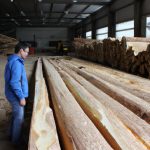
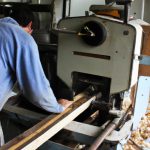
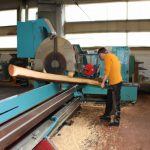

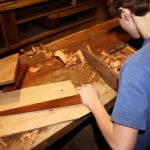

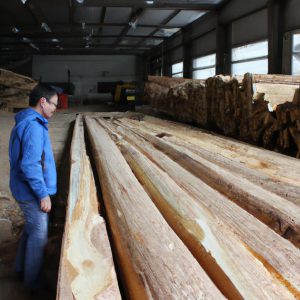
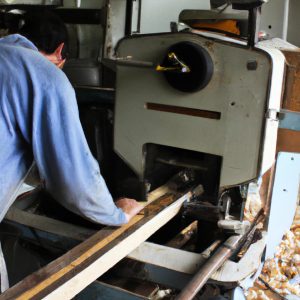
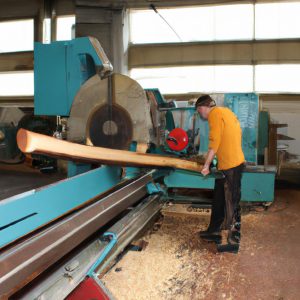
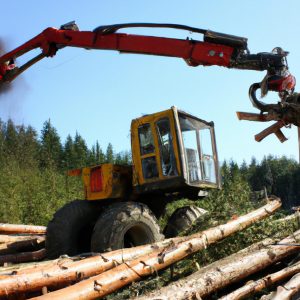
More Stories
Wood Moisture Content Control: A Key Element in Wood Production: Wood Engineering
Timber Framing: Wood Production and Engineering
Wood Engineering: Optimizing Wood Production Efficiency